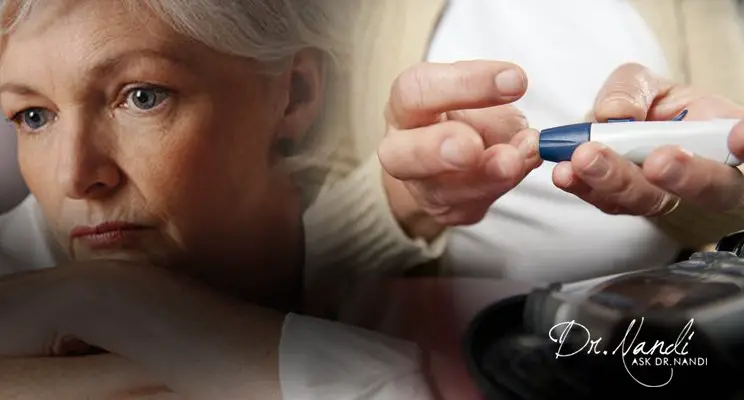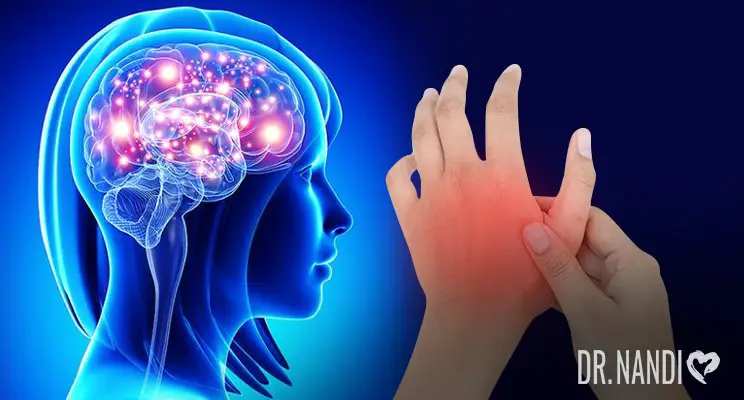Diabetes is a condition that has risen to epidemic proportions in America.
Currently, Type 2 is the most common from of diabetes (when compared to Type 1) and at least 29.1 million people in the United States are suffering from this condition.
Research suggests that 1 in 10 adults over the age of 20 have type 2 diabetes. There are 1.4 million new cases diagnosed in the nation every year.
Why have the numbers risen so high for a disease that is largely preventable? What can you do to prevent diabetes, or if already diagnosed, treat it successfully? I want to address these questions here today.
Many of my patients are on treatment plans for type 2 diabetes and prediabetes. I see amazing results in those who are committed to recovery and healing. Today I want to share with you the information I go over with them during our visits. Of course, reading my article is no substitute for seeing your own doctor. I encourage you to work with a medical professional to find the best treatment plan for you.
What Is Type 2 Diabetes?
Type 2 diabetes is a disease where your body does not make enough insulin or does not use insulin properly. Because of this, too much sugar stays in your blood and the cells are unable to utilize it.
Insulin is a vital hormone produced by the pancreas. Its main responsibility is to help cells absorb blood sugar (glucose) for energy. When there is too much sugar and the cells are filled to capacity, this sugar is converted to glycogen, and when there is enough of that it is stored as fat.
When a certain combination of the following are present, the cells in the body may become “resistant” to insulin:
- Obesity/excess weight
- Physical inactivity/sedentary lifestyle
- Genetic tendency for type 2 diabetes
Sugar itself does not cause diabetes. The over-consumption of sugar along with other genetic or medical factors may contribute to obesity which can then lead to diabetes.
Symptoms of Type 2 Diabetes
- Excess thirst
- Increased hunger (even after eating)
- Frequent urination
- Dry mouth
- Gaining or losing weight without trying
- Dark skin under armpits, chin or groin
- Persistent fatigue
- Numbness in hands and feet
- Wounds not healing quickly
- Frequent yeast infections
- Blurry vision
Type 2 vs Type 1 Diabetes
There are two different types of diabetes: Type 1 and Type 2.
Type 1 diabetes accounts for 10% of diabetic cases. In type 1 diabetes, the cells in the pancreas responsible for making insulin are damaged. Because of this, little or no insulin is made by the pancreas. As we discussed above, insulin is the messenger than helps cells absorb glucose for energy. People who are diagnosed with this chronic condition must use insulin injections to control their blood sugar levels. Complications of type 1 diabetes can be severe or even deadly if left untreated.
Type 2 diabetes happens due to insulin resistance, or because insulin is not working properly int he body. 90% of diabetic cases are type 2. It is largely preventable with good lifestyle and dietary choices. If one develops type 2 diabetes, it can generally be controlled with a combination of diet (we will go in depth below), exercise, and healthy lifestyle choices. In some cases glucose-lowering medications may also be necessary.
Who Is At Risk For Type 2 Diabetes?
The exact cause of diabetes is not known. There are several factors that seem to make one more at risk for developing this condition:
- Genetic history; family members who have had diabetes
- Obesity or being 20% above optimal body weight
- Physical stress (illness, surgery, chronic disease)
- Certain medications
- Pancreatic injury (surgery, infection, cancer, accident)
- High blood pressure
- Heavy alcohol use
- Smoking
- Poor diet
- Physical inactivity
Men vs Women
Men have a slightly higher risk for developing diabetes than women. (1) Researchers have found that this may be because men are “biologically more susceptible” to the condition because of where they naturally store extra fat (the waist). Fat that accumulates around the abdominal region is usually visceral adipose tissue (VAT) which research has found is the most dangerous type of fat. (2,3)
Age
The older you are, the higher risk there is for developing type 2 diabetes. Children are rarely diagnosed; in children under 10 years of age it’s less than 1 in 100,000, and in children age 10-19 it’s only 11 per 100,000.
After entering adulthood, the statistics for type 2 diabetes jump to 12.3% of all adults. That’s more than 1 in 10 people who are age 20+. (4)
Ethnic Groups
Certain ethnic groups have higher risk for type 2 diabetes. Compared to Caucasians, the following have a slightly higher risk according to statistics:
- Central and South Americans (8.5% higher)
- Cubans (9.3% higher)
- Mexican Americans (13.9% higher)
- Puerto Ricans (14.8% higher)
Adults that are of American Indian decent living in southern AZ have the world’s highest rate of type 2 diabetes, with 1 in 3 currently diagnosed. (5)

Complications Of Type 2 Diabetes
If type 2 diabetes is left untreated, it can lead to short-term and long-term health complications.
Short-term Diabetes Complications
Hypoglycemia
Hypoglycemia is low blood glucose, or low blood sugar. It happens when your blood sugar drops below normal levels (70+ milligrams per deciliter, though may be slightly different depending on the individual).
Mild symptoms of hypoglycemia include:
- Shaky/jittery
- Sweaty
- Hungry
- Slight headache
- Blurred vision
- Sleepy
- Dizzy
- Lightheaded
- Pale
- Trouble Concentrating
More severe symptoms would look like:
- Unable to eat/drink
- Seizures
- Unconsciousness
Certain diabetic medications can make one more susceptible to hypoglycemia (particularly insulin, sulfonylureas and melitinides).
Other factors that contribute to hypoglycemia in diabetics:
- Not eating enough carbohydrates
- Skipping meals or not eating for a long period of time
- Increasing physical activity beyond what is normal for you
- Too much alcohol, especially on an empty stomach
- Sickness that decreases normal calorie intake
To reduce your risk for hypoglycemia, check your blood sugar levels regularly. Keep healthy snacks with you or nearby at all times. Also try to stay consistent with how much you eat and your physical activity level. If you are going to be increasing the amount you exercise significantly, work with a healthcare professional to learn how to do it safely.
Hyperosmolar Hyperglycemic Nonketotic Syndrome (HHNS)
HHNS is a very rare condition where blood sugar levels get dangerously high. It can be fatal if not addressed quickly. Those who are elderly have the highest risk, and it is most likely to come on when someone is sick.
If you are sick and your blood sugar levels start to climb, your body will try to get rid of the excess sugar through frequent urination. When you are sick, it is harder to keep fluid down or to eat enough calories. Without proper re-hydration, blood glucose levels will continue to climb and will eventually send you into a coma.
Although it is a rare condition, you should still stay aware of it. And when you are sick, be extra vigilant at checking your blood sugar levels and keeping them stable. If you are having a hard time keeping fluids down, speak with a medical professional immediately to come up with a plan of action to keep you safe.
Long-term Complications
The following complications are what can happen if diabetes symptoms are not managed and treated properly. If you are working hard to keep your blood sugar steady and are living a healthy lifestyle, it is unlikely you will have to deal with these.
However, for those who do not take care of their bodies and their condition, these can become very real, life-altering complications of type 2 diabetes.
Eye, Kidney and Nerve Disease
The small blood vessels that take blood to your eyes, kidneys and heart can be damaged by consistently high glucose levels. Once they become damaged, they do not deliver blood as well as they should. This can cause problems like:
- Cataracts
- Retinopathy
- Loss of vision
- Kidney Disease
- Impaired kidney function
- Nerve damage (diabetic neuropathy), especially in the hands and feet
- Infections in areas where nerve loss has ocurred
To avoid these, be sure to make healthy lifestyle a priority as well as regular visits with your doctor. He or she can test you regularly for eye, kidney and nerve problems and catch any issues before they become more serious.
Heart, Brain and Blood Vessels
Type 2 diabetes, when not managed well over time, can cause plague buildup in the large blood vessels in your body. This may lead to heart attack, stroke, or peripheral vascular disease (vessel blockage in your legs).
Have your blood cholesterol levels checked annually by your doctor. You should also be checking your blood pressure regularly. If you are at risk for diabetic complications, your doctor should also check your pulse in your feet to ensure you have good circulation.
How Is Type 2 Diabetes Treated?
Type 2 diabetes, in most cases, can be managed well using a combination of both natural and conventional methods. Your doctor will first want to run some tests to confirm if you are prediabetic or type 2 diabetic. Once that is confirmed, you will come up with a plan of action together to help control symptoms, heal the body and improve your quality of life as much as possible.
Diagnosing Type 2 Diabetes
Your doctor will diagnose type 2 diabetes using one or several of the following tests:
- Glycated hemoglobin (A1C) test. This is a blood test where they measure the percentage of blood sugar attached to your hemoglobin, which will give them an idea of your average blood sugar level over the past several months.
- Random blood sugar test. This is where they will take your blood at a random time to see if your blood sugar level is above 200 mg/dl.
- Fasting blood sugar test. The doctor will ask you to fast overnight and will take your blood sugar in the morning. Levels below 100 mg/dl are considered normal. Anything above that becomes prediabetic (100-125 mg/dl) or diabetic (125+ mg/dl).
- Oral glucose tolerance test. For this test, you will be asked to fast overnight. Your blood sugar will be measured. Then, you will drink a sugar-filled liquid and your levels will be measured again after 2 hours. A reading of 200 mg/dl will indicate diabetes.
Conventional Treatments for Type 2 Diabetes
While some people may be able to manage their symptoms with lifestyle changes alone, many people need to use medications for a short or long period of time in order to manage type 2 diabetes. The need for medication will be determined by your healthcare professional based on a variety of factors including your overall health, your blood sugar levels, your lifestyle, age, etc.
- Metformin. Improves the body’s sensitivity to insulin and lowers glucose production by the liver. Possible side effects include nausea and diarrhea.
- Sulfonylureas. Encourage the body to secret more insulin. Possible side effects include low blood sugar and weight gain.
- Meglitinides. Stimulate the pancreas to make more insulin. Lower risk to the body then sulfonylureas. Possible side effect of low blood sugar and weight gain.
- Thiazolidinediones. Improves the body’s sensitivity to insulin. Come with higher risk of side effects than other medications including weight gain, increased risk of heart failure and fractures.
- DPP-4 Inhibitors. Help to reduce blood sugar levels.
- GLP-1 Receptor Agonists. Slow digestion and lower blood sugar levels. May also help with weight loss. Possible side effects of nausea and increased risk of pancreatitis.
- SGLT2 Inhibitors. A newer type of medication. Prevents the kidneys from reabsorbing sugar into the blood. Helps excess sugar be excreted in the urine. Possible side effects include yeast infections and urinary tract infections.
- Insulin Therapy. Injecting more insulin into the body with an insulin injector or fine needle and syringe, to encourage the proper absorption of sugar.
Lifestyle Treatments for Type 2 Diabetes
Quite Smoking
According to the CDC, smokers are 30-40% more likely to develop type 2 diabetes than non-smokers. And for those who already have type 2 diabetes, smoking makes it more difficult to control the disease, manage medications, and increases the likelihood of complications. (10)
Complications that are more likely to occur with diabetes and smoking include:
- Poor circulation, particularly to the legs and feet. Eventually this can lead to infections, ulcers and even amputation if left untreated.
- Heart disease
- Kidney disease
- Eye disease (retinopathy)
- Nerve damage
If you need help quitting, call 1-800-QUIT NOW.
Lose Weight/Maintain A Healthy Weight
If you are overweight, studies have shown that losing just 5%-7% of your body weight may help to prevent or delay diabetes. (9) If you are 200 pounds that would mean losing 12-14 pounds. Try to lose the weight by making lifestyle changes and not crash dieting. Your goal should be to lose weight and keep it off by making permanent changes in your eating and exercise habits.
Exercise Regularly
Moving your body regularly is an important part of staying healthy for everyone, including those with type 2 diabetes. You want to get at least 30 minutes of exercise 5 days out of the week. Pick things you enjoy doing so it is easier to stay consistent. You do not have to be an Olympic weight lifter or marathon runner, you just need to MOVE and get your heart beating!
It is important to work with a physician to determine the best way to increase your physical activity, as you need to monitor your blood sugar closely when doing so. When you exercise, your blood sugar naturally drops, so keep healthy snacks nearby like a piece of fruit.
Studies have found that the most effective exercise routine for type 2 diabetics is a combination of aerobic exercise and resistance training.

My Personal RX: The Diabetes Diet Plan
Here are the dietary guidelines I give to my diabetic patients. It is effective for supporting healthy blood sugar levels and overall vitality. Work with your physician to modify as needed for your situation.
Step 1: Build your meals around clean protein, fiber, and healthy fats. .
Clean Protein
- Wild salmon/fish
- Free-range eggs
- Grass-fed beef
- Organic chicken
- Organic turkey
- Quinoa
- Plant-based proteins
Fiber
- Green leafy vegetables
- Artichoke
- Celery
- Nuts and seeds
- Split peas
- Figs
- Broccoli
- Other vegetables
- Bran (oat, wheat, corn, rice)
- Beans, lentils
- Berries
- Amaranth
- Barley
- Buckwheat
- Oats
- Quinoa
- Teff
- Wild rice
Healthy Fats
- Coconut oil
- Coconut milk
- Ghee
- Grass-fed butter
- Avocados
- Avocado oil
- Olive oil
- Nuts and seeds
- Wild-caught fish
Step 2: Avoid refined sugars, replace with safer alternatives.
Refined sugars
- Soda
- Fruit juice sugary beverages
- Candy
- Processed snacks (read labels)
- Sugary cereals
- Dressings (check labels)
Sugar alternatives
- Stevia
- Erythritol
- Raw honey (small amounts)
- Monk fruit
- Coconut sugar (small amounts)
- Blackstrap molasses (small amounts)
Step 3: Helpful supplements
- Cinnamon and cinnamon essential oil. Cinnamon has been found to help lower blood sugar levels and improve insulin sensitivity. You can add cinnamon to your diet as well as use the essential oil topically or diffused. (12)
- Fish Oil. High-quality Omega 3 fish oil can help reduce inflammation and lower triglycerides and apoproteins. (13)
- Alpha-Lipolic Acid (ALA). ALA helps to lower blood sugar levels and also supports the pancreas (where insulin is created). (14)
- Magnesium. Supports the digestion of sugar and may decrease risk for diabetes by 15%. (15)
- Coriander Essential Oil. Supports the liver in balancing blood sugar levels. Use topically or diffuse.
- SuperFoods Cookbook: This book offers a collection of delicious and healthy recipes made with superfoods – foods dense with nutrients and antioxidants. It guides you to prepare meals that can help regulate your blood sugar levels and improve overall health.
- Super Greens Powder: This is a nutrient-rich supplement made from a blend of green vegetables and other natural ingredients. It can assist in enhancing your nutrient intake, supporting your immune system, and maintaining optimal blood sugar levels.
Heading to the doctor? Here is a Doctor Checklist for Type 2 Diabetes.
Frequently Asked Questions About Type 2 Diabetes
Q. Will type 2 diabetes kill you?
A. While type 2 diabetes is not lethal at first, it can cause life-threatening complications later on in life if not treated and managed. These include heart and kidney related complications such as heart attack, stroke and kidney disease/failure.
Q. Can type 2 diabetes be cured?
A. There is some evidence that supports type 2 diabetes may be occasionally “cured” through weight loss and major lifestyle changes. (6) Traditionally, however, it has been seen as a progressive disease that can be controlled but not completely cured.
Q. Where does type 2 diabetes affect the body?
A. The first place type 2 diabetes causes damage is the small and large blood vessels. Once these are damaged, it can create major problems for the eyes, kidneys, heart and nerves.
Q. Can type 2 diabetes be reversed?
A. In the early stages of prediabetes and even type 2 diabetes, there have been people who have reversed their symptoms or even made them disappear entirely. These people worked closely with a medical professional, took efforts to lose weight and made major lifestyle changes. There is also some evidence that those who are obese and have a diabetes diagnosis may reverse symptoms with bariatic surgery. (7)
Q. Can type 2 diabetes become type 1?
A. It is believed that type 2 diabetes cannot become type 1 diabetes. They are similar conditions but have different causes. Type 1 diabetes is considered an autoimmune disease. There is a small body of research that suggests type 2 can turn into type 1, but is not large enough to draw concrete conclusions nor change current treatment regimens.
Q. Can type 2 diabetes be cured naturally?
A. This is something that may differ from person to person. You should always work with a dedicated medical professional to come up with the best treatment plan for your unique situation.
Q. Can type 2 diabetes go away with weight loss?
A. Many patients diagnosed with type 2 diabetes significantly reduce their symptoms once they lose weight and begin a regular fitness routine.
Q. Can type 2 diabetes cause depression?
A. There is some research that suggests your risk for depression doubles if you have type 2 diabetes. (8) It is unclear exactly why this is the case.
Conclusion
If you think you might have type 2 diabetes, I suggest scheduling an appointment with your healthcare professional to get proper testing. There is a lot you can do to keep your body well and reduce the impact of this disease. Here is a Doctor Checklist for Type 2 Diabetes.
I believe strongly that we all should be our own #HealthHero. This means that you are committed to your own well being and will do what it takes to live a life of health and vitality. When you feel your best, you can make the most impact in the lives of those you love and in the community.
Did you find the information in the post useful? What other conditions would you be interested in learning about on our blog? Comment below.

References
- https://www.diabetesselfmanagement.com/blog/men-at-higher-risk-for-type-2-diabetes/
- http://www.bbc.co.uk/news/health-15147999
- https://www.sciencedaily.com/releases/2017/11/171128091015.htm
- https://www.ncbi.nlm.nih.gov/pmc/articles/PMC4656904/
- https://www.ncbi.nlm.nih.gov/pmc/articles/PMC1447266/
- https://www.ncbi.nlm.nih.gov/pmc/articles/PMC3553609/
- https://www.ncbi.nlm.nih.gov/pmc/articles/PMC3632208/
- https://www.cdc.gov/features/diabetesprevention/
- https://www.niddk.nih.gov/about-niddk/research-areas/diabetes/diabetes-prevention-program-dpp/Pages/default.aspx
- https://www.cdc.gov/tobacco/campaign/tips/diseases/diabetes.html
- http://www.ncbi.nlm.nih.gov/pubmed/9356027
- http://www.ncbi.nlm.nih.gov/pubmed/19930003
- http://umm.edu/health/medical/altmed/supplement/omega3-fatty-acids#ixzz3n4Eutf00
- https://umm.edu/health/medical/altmed/supplement/alphalipoic-acid
- http://www.ncbi.nlm.nih.gov/pubmed/17645588












 Subscribe to Ask Dr. Nandi YouTube Channel
Subscribe to Ask Dr. Nandi YouTube Channel










